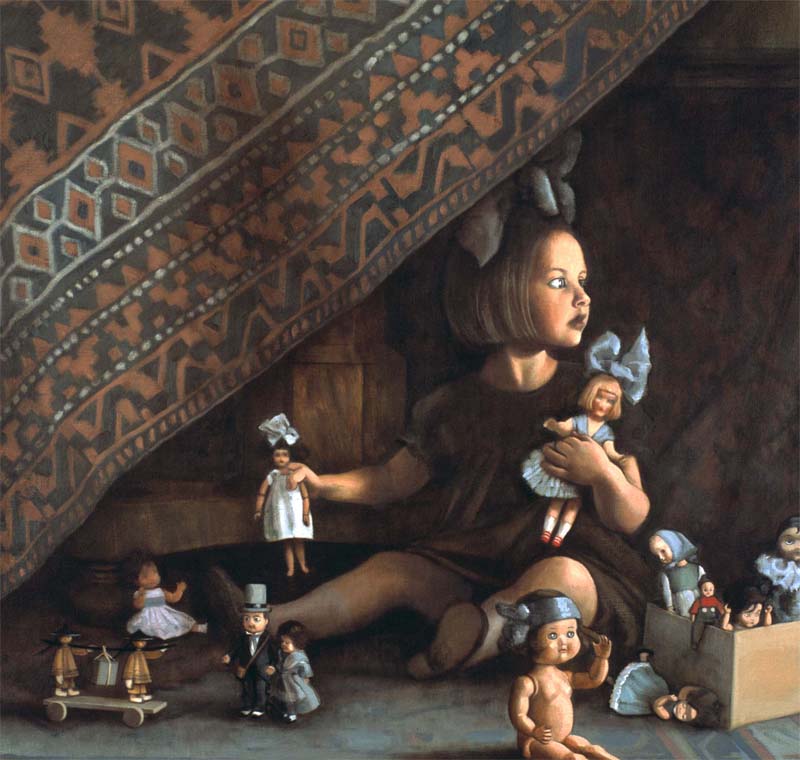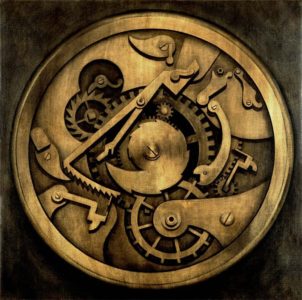A beautifully executed and intellectually thought-provoking cycle of artworks, prompted by the recollections of the artist’s mother Hildegard, who fled from Germany to England as a Jewish refugee in 1939.

Hildegard under the table [detail], oil on canvas, Barbara Loftus
“We must rid ourselves of the delusion that it is the major events which have the most decisive influence on us. We are more deeply and more continuously moved by the tiny catastrophes that make up daily life.”
Siegfried Kracauer, The Salaried Masses, 1929
Sigismund’s Watch narrates a ‘primal scene’ from the early 1920s, recalled by Hildegard in old age, when, as a small child, she witnessed, unseen by her parents, a bitter marital row. The cause was her father Sigismund’s bankruptcy, which inflicted sudden impoverishment on their comfortable bourgeois way of life. Hidden under the table, she saw her mother tear her father’s gold pocket watch from his waistcoat pocket, stamp on it and smash it.

Watch, oil on canvas, Barbara Loftus
The smashing of the watch becomes for Loftus a potent and poignant symbol – standing for the chaos into which Hildegard’s family and many others were plunged overnight, and for the longer-term impact of economic crisis on one assimilated Jewish family. The ensuing climate of fear, suspicion and destabilization in the collective psyche dealt a fatal blow to the fragile concept of the German-Jewish symbiosis.
The historic equation of the Jew and money re-emerged as the scapegoat for the failing mark, and the brutalising effects of hyperinflation helped undermine the Weimar Republic and lay the foundations for the Third Reich and the rise of Hitler.
Loftus’s working methods are complex and distinctive: her mother’s spoken (and recorded) testimony, combined with detailed archival research, enabled her to instruct professional actors to recreate the scenes she imagined in her mind’s eye.
Photographs and film of this re-enactment formed the basis for a dramatic sequence of drawings and cut-out silhouettes, which in turn gave rise to a series of oil paintings, which although naturalistic in style, pare the narrative down to its eloquent essentials. Transcending its historical sources, Sigismund’s Watch is a subtle and sophisticated meditation on the meshing of time and memory, gender, marriage and money, power, history and the act of bearing witness.
Curated by Monica Bohm-Duchen